Risk prevention
00352 - 27 28 15 38 | mycon@mycon.lu
What is asbestos ?
"Asbestos" is a natural fibrous mineral. There are six types of asbestos, three of which were used industrially in Western Europe: White asbestos (chrysotile), Brown asbestos (amosite), Blue asbestos (crocidolite). When asbestos materials decompose, crystalline asbestos fibres are released, which have the property of splitting along their longitudinal axis and thus becoming smaller and smaller (400 to 500 times smaller than a human hair). The human body can only excrete or decompose a small part of these fibres. Asbestos fibres in the air can increase the risk of lung cancer or cancer of the pleura.
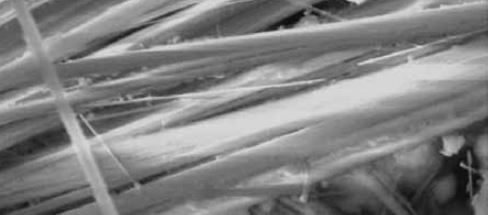
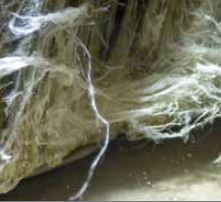
![]() This brochure is in no way a substitute for asbestos training!
This brochure is in no way a substitute for asbestos training!
A distinction is made between 2 groups:
| LOW-BOUND ASBESTOS PRODUCTS: | ASBESTOS CEMENT PRODUCTS: |
|---|---|
| Products consisting of weakly bonded asbestos with varying mass content. | Prefabricated products with cement as binder and with a mass content of asbestos usually less than 15% at an apparent density greater than 1,400 kg/m3. |
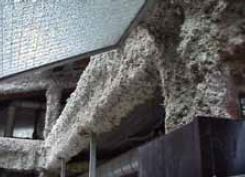 | 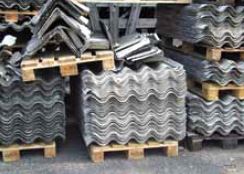 |
| LOW-BOUND ASBESTOS PRODUCTS: |
|---|
| Products consisting of weakly bonded asbestos with varying mass content. |
 |
| ASBESTOS CEMENT PRODUCTS: |
| Prefabricated products with cement as binder and with a mass content of asbestos usually less than 15% at an apparent density greater than 1,400 kg/m3. |
 |
Due to the very good physical-chemical properties (e.g.: non-flammable), many asbestos products were used in construction and industry.
The identification of asbestos products usually proves to be quite complicated and for this reason it is advisable to consult a person with many years of professional experience in this field.
Since 2001, there has been a general ban on the marketing of asbestos in the Grand Duchy of Luxembourg.
Legislation concerning asbestos
- Règlement grand-ducal du 15 juillet 1988 concernant la protection des travailleurs contre les risques liés à une exposition à l'amiante pendant le travail Grand-Ducal Regulation of 15 July 1988 on the protection of workers against risks from asbestos in the workplace.
- Règlement grand-ducal du 21 avril 1993 modifiant le règlement grand-ducal du 15 juillet 1988 concernant la protection des travailleurs contre les risques liés à une exposition à l'amiante pendant le travail - Grand-Ducal Regulation of 21 April 1993 amending the Grand-Ducal
Ordinance of 15 July 1988 on the Protection of Workers against the Risks arising from
Asbestos in the workplace. - Règlement grand-ducal du 4 juillet 2007 portant modification du règlement grand-ducal modifié du 15 juillet 1988 concernant la protection des travailleurs contre les risques liés à une exposition à l'amiante pendant le travail (en abrégé "RGD-Amiante") - Grand-Ducal Regulation of 4 July 2007 amending the amended Grand-Ducal Regulation of 15 July 1988 on the protection of workers against a risk of exposure to asbestos at work (abbreviated to "RGD-Asbest").
(Consulter également ITM-SST 7017.1 - Aide mémoire - Texte coordonné du règlement grandducal modifié du 15 juillet 1988 concernant la protection des travailleurs contre les risques liés à une exposition à l'amiante pendant le travail) - (See also ITM-SST 7017.1 - Aide mémoire.
- Coordinated text of the amended Grand-Ducal Regulation of 15 July 1988 on the protection of workers against risks from asbestos at work). - Règlement grand-ducal du 27 juin 2008 concernant les prescriptions minimales de sécurité et de santé à mettre en oeuvre sur les chantiers temporaires ou mobiles - Grand-Ducal Regulation of 27 June 2008 on the implementation of the minimum safety and health requirements for temporary or mobile construction sites.
- - Loi du 16 décembre 2011 (Paquet REACH) (Law of 16 December 2011 (Paquet Reach))
a) relative aux contrôles et aux sanctions concernant l'enregistrement, l'évaluation et l'autorisation des substances chimiques et les restrictions y applicables, telles que ces substances sont visées par le règlement (CE) no 1907/2006 du Parlement européen et du Conseil du 18 décembre 2006
concerning the registration, evaluation and authorisation of chemical substances and the restrictions applicable to them (REACH), establishing a European Chemicals Agency, modifiant la directive 1999/45/CE et abrogeant le règlement (CEE) no 793/93 du Conseil et le règlement (CE) no 1488/94 de la Commission ainsi que la directive 76/769/CEE du Conseil et les directives 91/155/CEE, 93/67/CEE, 93/105/CE et 2000/21/CE de la Commission;
b) relative aux contrôles et aux sanctions concernant la classification, l'étiquetage et l'emballage des substances et des mélanges, tels que ces substances et mélanges sont visés par le règlement (CE) no 1272/2008 du Parlement européen et du Conseil du 16 décembre 2008 relatif à la classification, à l'étiquetage et à l'emballage des substances et des mélanges, modifiant et abrogeant les directives 67/548/CEE et 1999/45/CE et modifiant le règlement (CE) no 1907/2006; c) abrogeant la loi modifiée du 15 juin 1994 relative à la classification, l'emballage et l'étiquetage des substances dangereuses;
d) abrogeant la loi modifiée du 3 août 2005 relative à la classification, à l'emballage et à l'étiquetage des préparations dangereuses. - Recommendations for accident prevention of the Luxembourg Accident Insurance (AAA).
![]() Incomplete list!
Incomplete list!
HEALTH RISKS OF ASBESTOS
Asbestos can cause serious health problems: Lung cancer or cancer of the pleura, fibrosis or asbestosis and pleural deposits.
These diseases can occur through short and/or regular exposure and often only appear after 20 to 40 years. The penetration of the fibres during respiration depends on their length and diameter.
In the event of accidental inhalation, the occupational physician will draw up an initial assessment (spirometry = pulmonary function test, X-ray examination of the thorax) and plan the regular follow-up examinations.
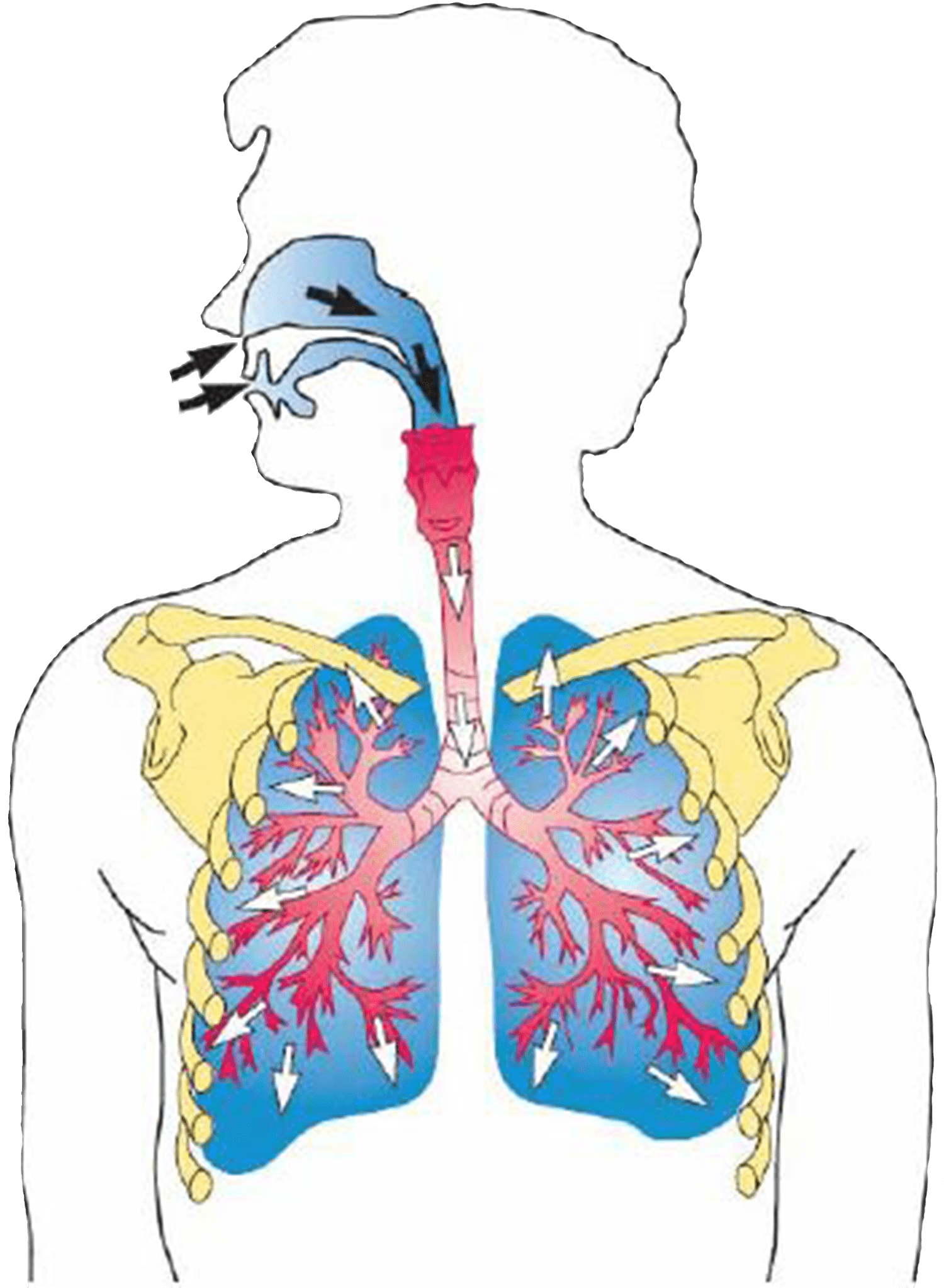
LABELLING OF APPLICATIONS CONTAINING ASBESTOS
The labelling and packaging of applications containing asbestos are regulated by the law of 16 December 2011 (Paquet REACH).
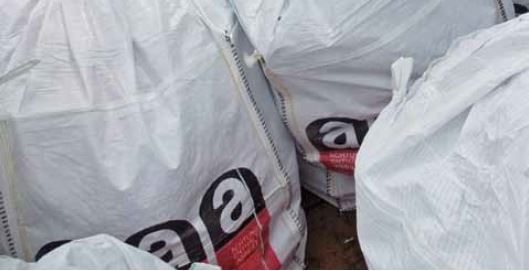
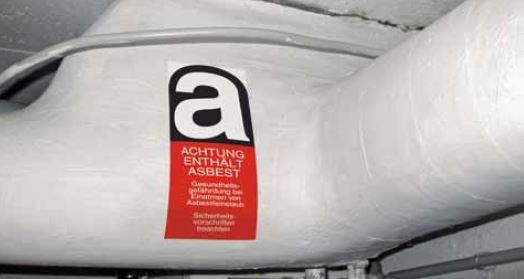
Is identification of building materials suspected of containing asbestos mandatory before demolition or maintenance work?
Yes,
According to "RGD Asbestos" Art. 9bis:
"Before commencing demolition or maintenance work, employers shall take all appropriate measures, if necessary by obtaining appropriate information from the owner, to identify building materials suspected of containing asbestos."
Only the French version is conclusive.
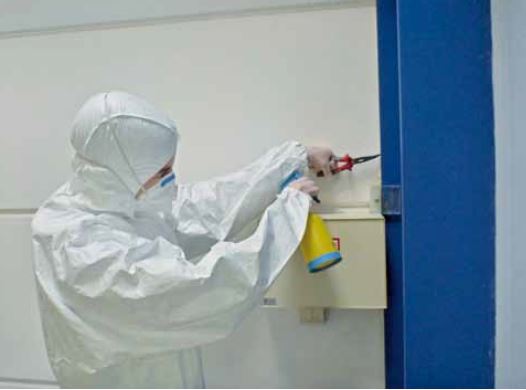
Material sampling
Products which may contain weakly bound asbestos
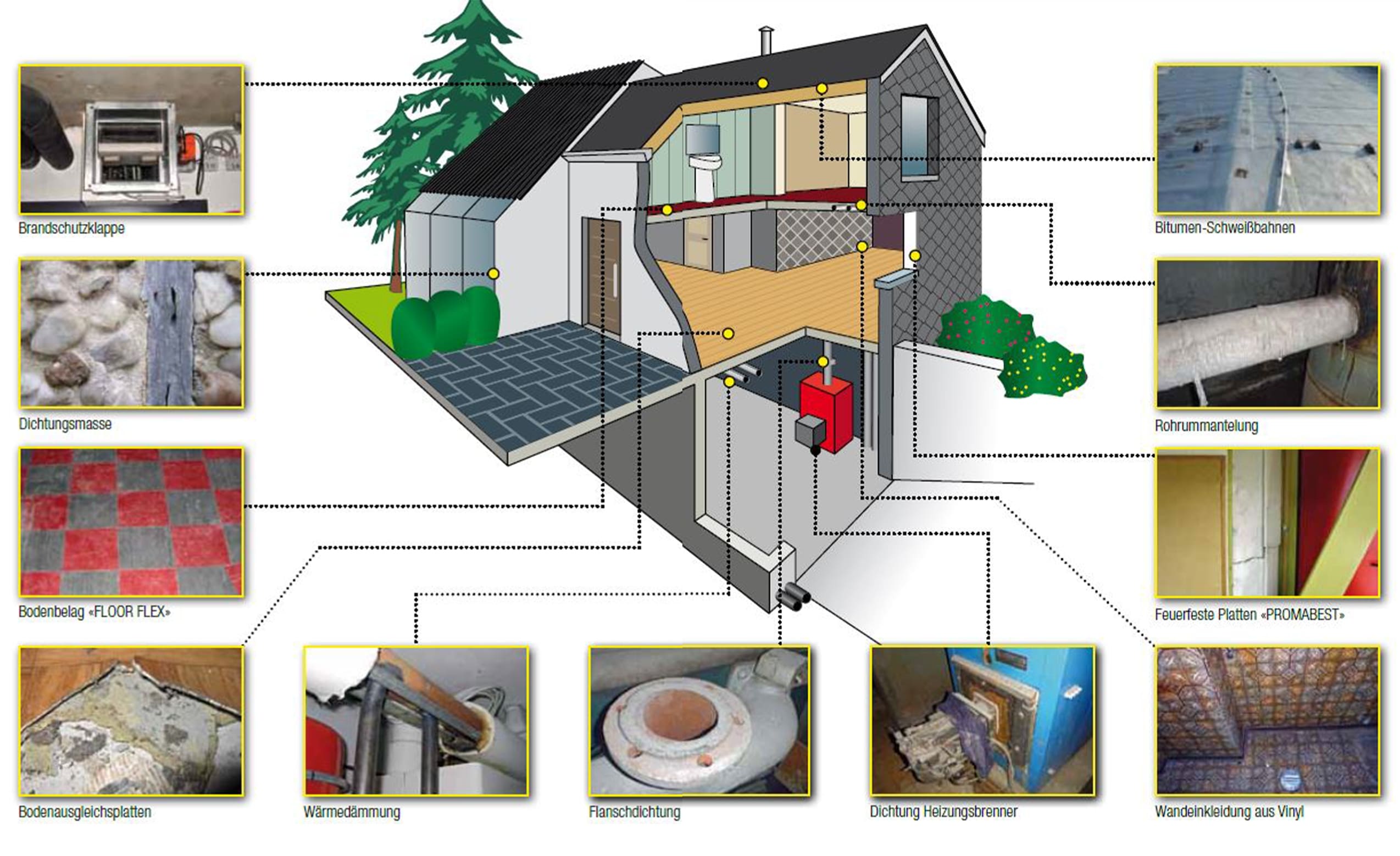
Products that may contain asbestos cement
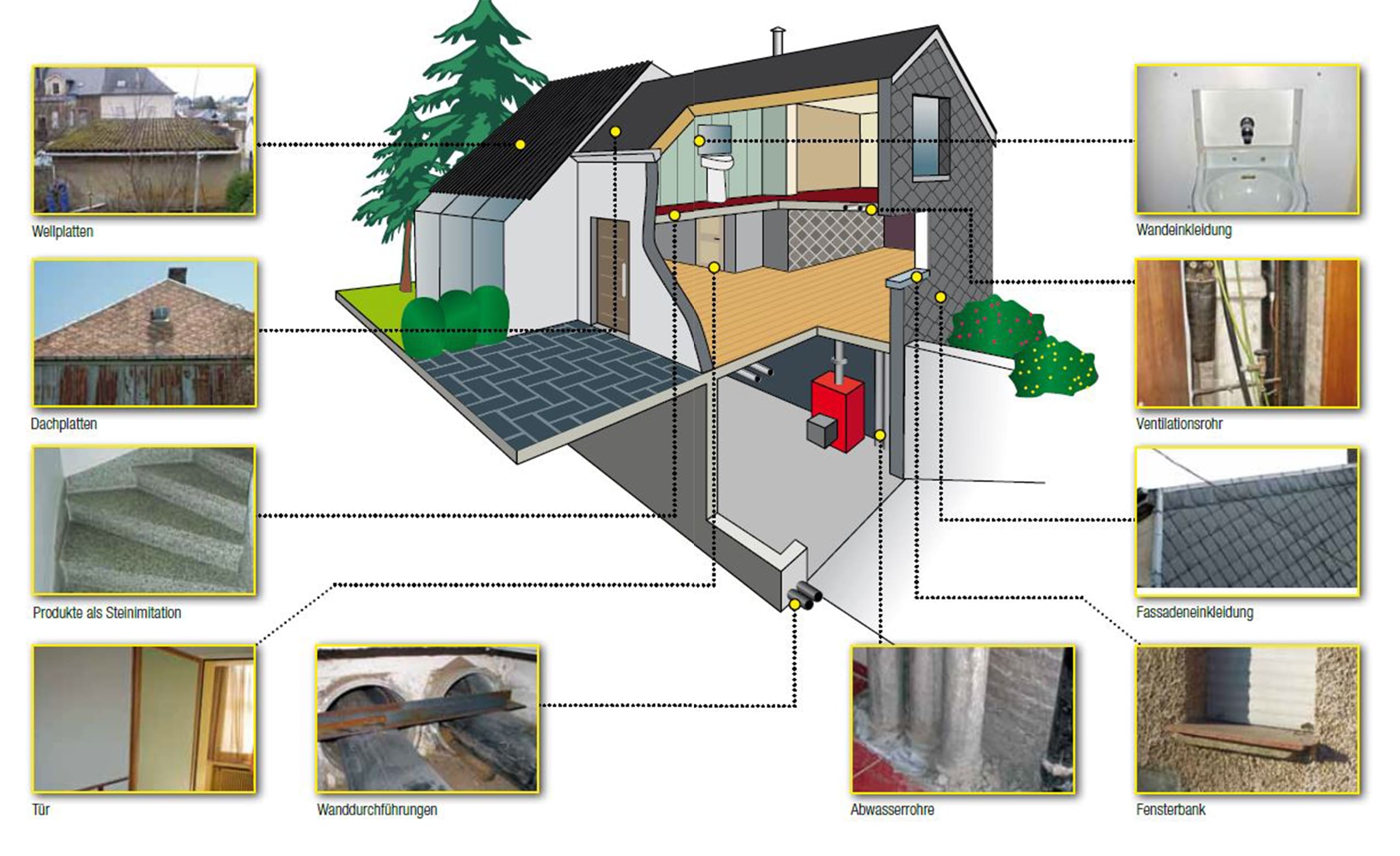
Asbestos removal work
Is training for workers mandatory before carrying out asbestos removal work ?
Yes,
According to "RGD Asbestos" Art. 11bis:
"Employers are obliged to provide adequate training for all workers who are or may be exposed to dust containing asbestos. This training must be provided at regular intervals and at no cost to the workers. It must be provided prior to the start of any work involving
exposed to asbestos is taking place."
Only the French version is conclusive.
In order to carry out the dismantling work of asbestos cement panels on roofs or exterior walls, a responsible person of the executing company must have completed 8 hours of training.
In order to be able to carry out all other types of work involving asbestos hazards, a person in charge of the company carrying out the work, the asbestos site supervisor and any worker exposed to asbestos fibres must complete 20 hours of training.
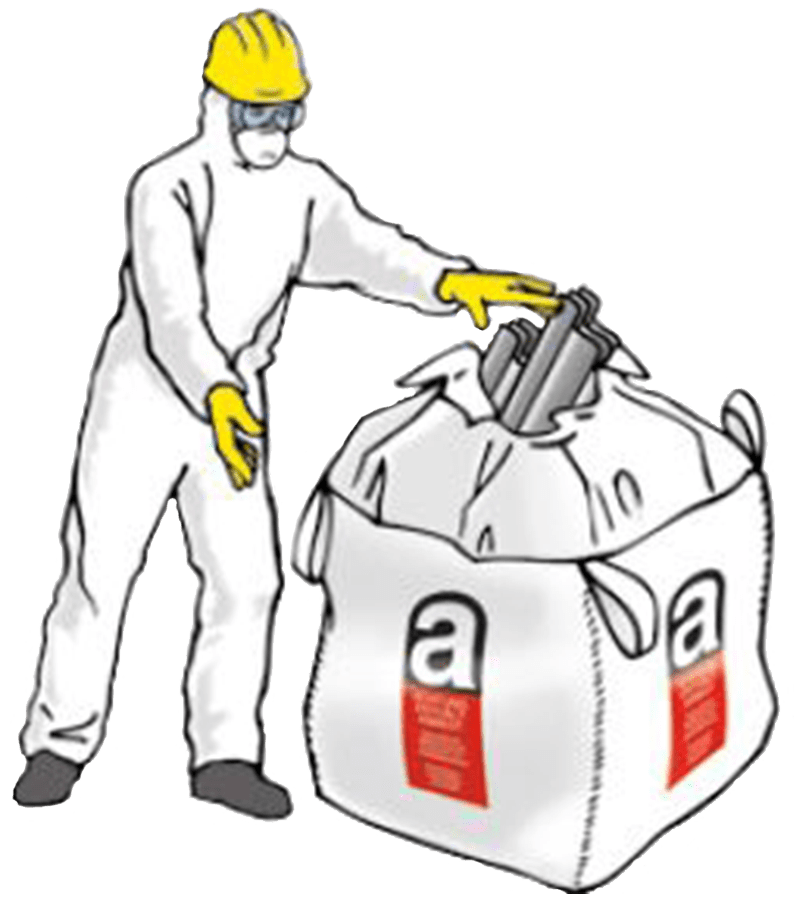
Is a work permit or notification required prior to performing
of asbestos removal work ?
Yes,
Before starting asbestos removal work, a work plan must be prepared by the employer and submitted to the Labour Inspectorate for approval (VISA). In some cases (e.g.: Deconstruction of asbestos cement products outdoors in buildings not occupied by persons), a notification of the asbestos deconstruction work to the labour inspectorate is sufficient.
Is there provision for monitoring of the asbestos removal work ?
Yes,
For the supervision of asbestos removal works, the client must appoint an approved inspection body to assist the Labour Inspectorate within their powers and duties, with the exception of removal works of asbestos-cement products outdoors and works using standard methods*.
Mycon has the necessary authorisation
* Work with standardised procedures means work where the limit value is not exceeded and the work procedure is standardised and validated by the labour inspectorate.
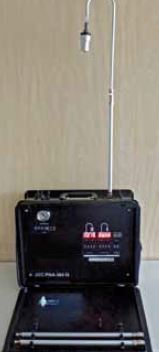
Luff sampling
WORkS THAT MAy BE AN ASBESTRISK
| Working with potential hazards - examples | |||
|---|---|---|---|
| Maintenance, dismantling, cleaning and replacement of asbestos-containing parts (e.g. replacement of gaskets, flange gaskets or thermal protection, repairs to fire doors, cleaning of compressed air, etc.): Replacement of gaskets, flange gaskets or thermal protection, repairs to fire doors, cleaning with compressed air, ...). | - Laying electrical cables (e.g.: slitting work, drilling through partition walls, ...) - Fuse replacement - Piercing/cutting fire protection materials | ||
| Renovation work (e.g.: Deconstruction of partition walls, facades, removal of pipe insulation, cutting of building materials, removal of linings, floor tiles and bituminous adhesive, deconstruction of floor levelling boards, deconstruction of suspended ceilings, ...). | Preparatory work (e.g.: Stripping / cleaning of surfaces, ...) | ||
| Replacement of insulation materials (e.g.: Deconstruction of thermal and acoustic linings, bituminous sealings and fire compartments, ...) | - Deconstruction and maintenance work on roof panels or façade elements - Removal of bitumen welding sheets - Cleaning of roof panels (e.g.: moss removal) | ||
| - Maintenance and servicing work (e.g.: Replacing flange seals, cleaning pipes, removing fire dampers, ...) - Work (e.g.: chopping, welding, ...) on pipelines with insulating materials | Building demolition, some of the previously listed works must be carried out before demolition. (e.g.: disassembly of roof panels, of partition walls, of insulation, ...). | ||
| Working with potential hazards - examples | |||
|---|---|---|---|
| Maintenance, dismantling, cleaning and replacement of asbestos-containing parts (e.g. replacement of gaskets, flange gaskets or thermal protection, repairs to fire doors, cleaning of compressed air, etc.): Replacement of gaskets, flange gaskets or thermal protection, repairs to fire doors, cleaning with compressed air, ...). | |||
| Renovation work (e.g.: Deconstruction of partition walls, facades, removal of pipe insulation, cutting of building materials, removal of linings, floor tiles and bituminous adhesive, deconstruction of floor levelling boards, deconstruction of suspended ceilings, ...). | |||
| Replacement of insulation materials (e.g.: Deconstruction of thermal and acoustic linings, bituminous sealings and fire compartments, ...) | |||
- Maintenance and servicing work (e.g.: Replacing flange seals, cleaning pipes, removing fire dampers, ...) - Work (e.g.: chopping, welding, ...) on pipelines with insulating materials | |||
| Preparatory work (e.g.: Stripping / cleaning of surfaces, ...) | |||
- Laying electrical cables (e.g.: slitting work, drilling through partition walls, ...) - Fuse replacement - Piercing/cutting fire protection materials | |||
| Building demolition, some of the previously listed works must be carried out before demolition. (e.g.: disassembly of roof panels, of partition walls, of insulation, ...). | |||
- Deconstruction and maintenance work on roof panels or façade elements - Removal of bitumen welding sheets - Cleaning of roof panels (e.g.: moss removal) | |||
| Working with potential hazards - examples | |||
|---|---|---|---|
| Maintenance, dismantling, cleaning and replacement of asbestos-containing parts (e.g. replacement of gaskets, flange gaskets or thermal protection, repairs to fire doors, cleaning of compressed air, etc.): Replacement of gaskets, flange gaskets or thermal protection, repairs to fire doors, cleaning with compressed air, ...). | |||
| Renovation work (e.g.: Deconstruction of partition walls, facades, removal of pipe insulation, cutting of building materials, removal of linings, floor tiles and bituminous adhesive, deconstruction of floor levelling boards, deconstruction of suspended ceilings, ...). | |||
| Replacement of insulation materials (e.g.: Deconstruction of thermal and acoustic claddings, bituminous | |||
- Maintenance and servicing work (e.g.: Replacing flange seals, cleaning pipes, removing fire dampers, ...) - Work (e.g.: chopping, welding, ...) on pipelines with insulating materials | |||
| Preparatory work (e.g.: Stripping / cleaning of surfaces, ...) | |||
- Laying electrical cables (e.g.: slitting work, drilling through partition walls, ...) - Fuse replacement - Piercing/cutting fire protection materials | |||
| Building demolition, some of the previously listed works must be carried out before demolition. (e.g.: disassembly of roof panels, of partition walls, of insulation, ...). | |||
- Deconstruction and maintenance work on roof panels or façade elements - Removal of bitumen welding sheets - Cleaning of roof panels (e.g.: moss removal) | |||

